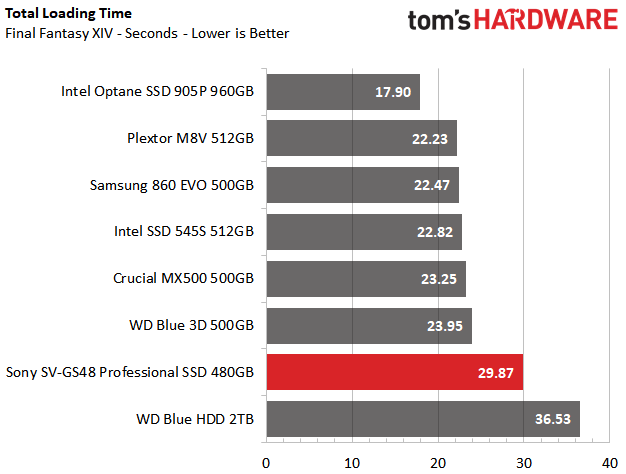Sony G Series Professional SSD Review: Endurance Comes At A Price
Why you can trust Tom's Hardware
480GB Performance Results
Comparison Products
While we do not have any of the SV-GS48's direct competitors, we included the Intel SSD 545s, Samsung 860 EVO, Crucial MX500, Plextor M8V and WD Blue 3D. All feature 3D TLC NAND and current-gen controllers that are optimized for typical desktop PC workloads. We have also added results from a 960GB Intel Optane SSD 905P and a 2TB WD Blue HDD.
Trace Testing – PCMark 8 Storage Test 2.0
PCMark 8 is a trace-based benchmark that uses Microsoft Office, Adobe Creative Suite, World of Warcraft, and Battlefield 3 to measure the performance of storage devices in real-world scenarios.


The Sony SSDs sequential write-focused firmware doesn’t fare well in PCMark 8, ranking sixth overall in the Storage 2.0 benchmark. Other mainstream SSDs, such as the WD Blue 3D and Samsung 860 EVO, deliver significantly faster application performance.
Game Scene Loading - Final Fantasy XIV
The Final Fantasy XIV StormBlood benchmark is a free real-world game benchmark that easily and accurately compares game load times without the inaccuracy of using a stopwatch.
Sony’s SV-GS48 comes up last in the SSD group with a total time of nearly 30 seconds. Other SSDs offer twice the performance on the HDD, but the Sony SSD isn't as impressive.
Transfer Rates – DiskBench
We use the DiskBench storage benchmarking tool to test file transfer performance with our own custom 50GB block of data. Our data set includes 31,227 files of various types, like pictures, PDFs, and videos. We copy the files to a new folder and then follow up with a read test of a newly-written 6 GB file.

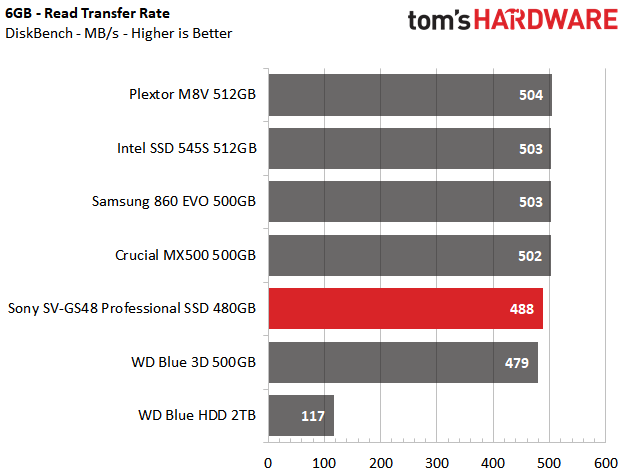
The Sony G Series copied files at 129MB/s, which is similar to both the Plextor M8V and WD Blue 3D. The G Series' average read throughput of 488 MB/s edges ahead of the WD Blue 3D by just a few points. Overall, the Sony drive is three to four times faster than an HDD during file copies and reads.
Get Tom's Hardware's best news and in-depth reviews, straight to your inbox.
SYSmark 2014 SE
Like PCMark, SYSmark uses real applications to measure system performance. SYSmark takes things much further, however. It utilizes fourteen different applications to run real workloads with real data sets to measure how overall system performance impacts the user experience. BAPCo's SYSmark 2014 SE installs a full suite of applications for its tests, which includes Microsoft Office, Google Chrome, Corel WinZip, several Adobe software applications, and GIMP. That also makes it a great test to measure the amount of time it takes to install widely-used programs after you install a fresh operating system.
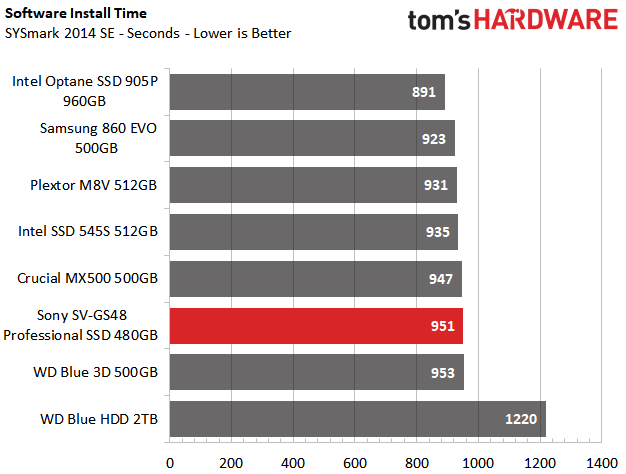
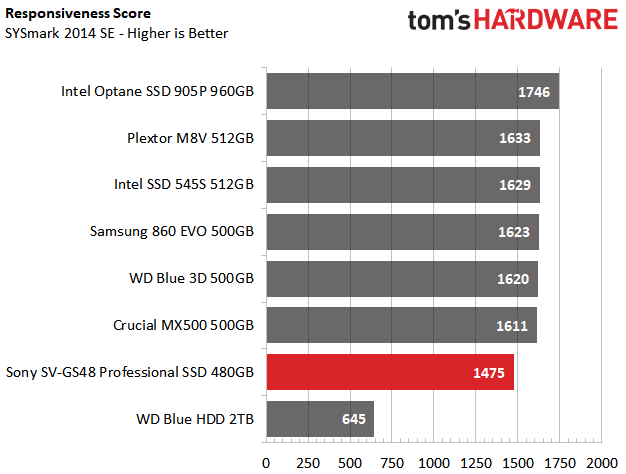
The Sony SV-GS48 installed SYSmark faster than an HDD and blew the HDD’s score out of the water. But, compared to other SSDs, the SV-GS48 landed in last place.
ATTO
ATTO is a simple and free application that SSD vendors commonly use to assign sequential performance specifications to their products. It also gives us insight into how the device handles different file sizes.
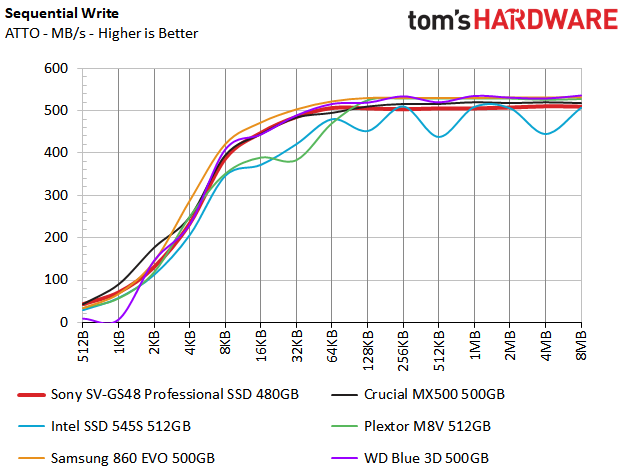
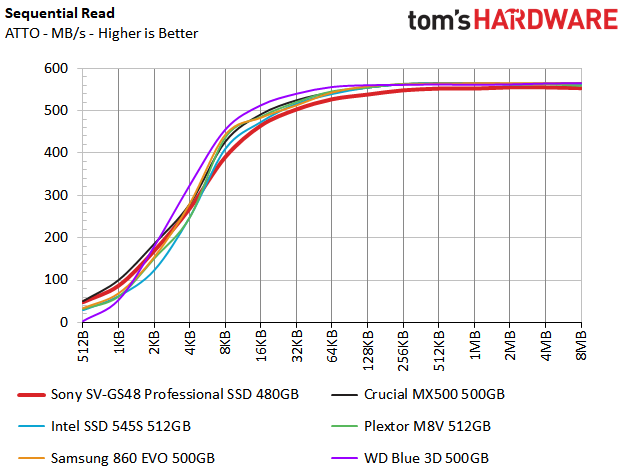
The SV-GS48 attained peak results of 554/511 MB/s of sequential read/write throughput, which is average for a SATA SSD.
Anvil's Storage Utilities
Anvil's Storage Utility is a commonly-referenced benchmark that simplifies the complex IOMETER benchmark and its underlying Dynamo engine with a one-click software wrapper.
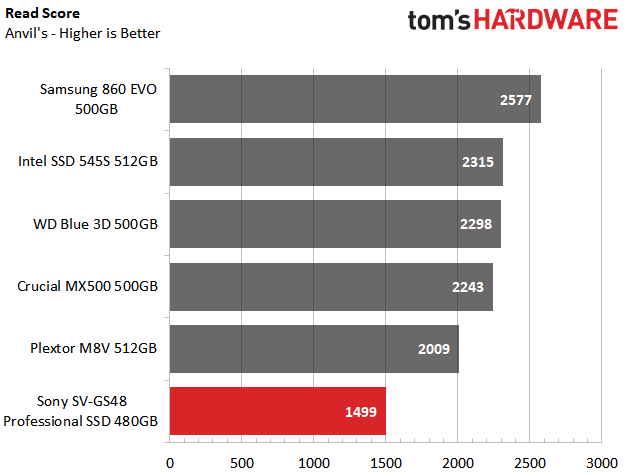
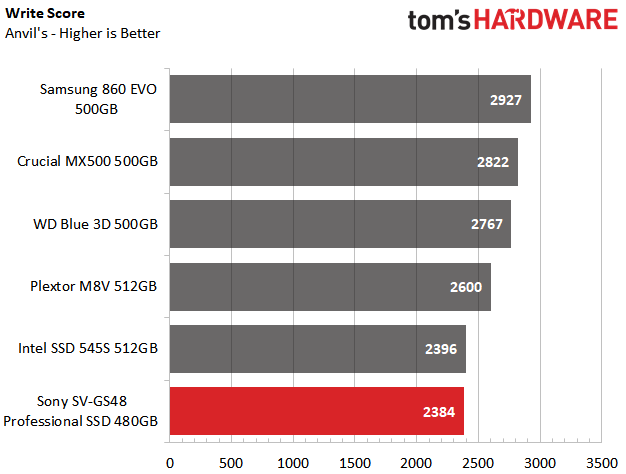
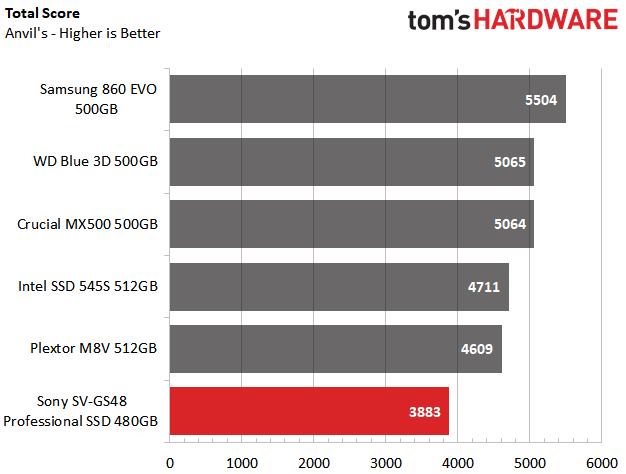
The Sony Professional G Series displays the lowest performance out of the comparison pool. While it is strong in sequential read and write tasks, lower-than-average 4K random read and write results take a toll. Read workloads suffer the most – even the nearest competitor is 33% better.
CrystalDiskMark
CrystalDiskMark (CDM) is a simple and easy to use file size benchmarking tool.
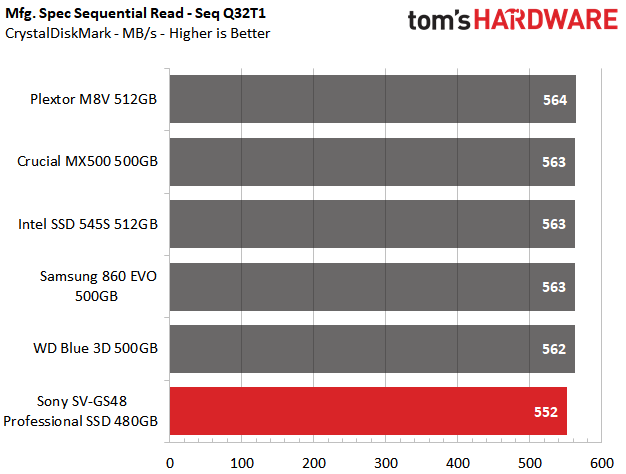
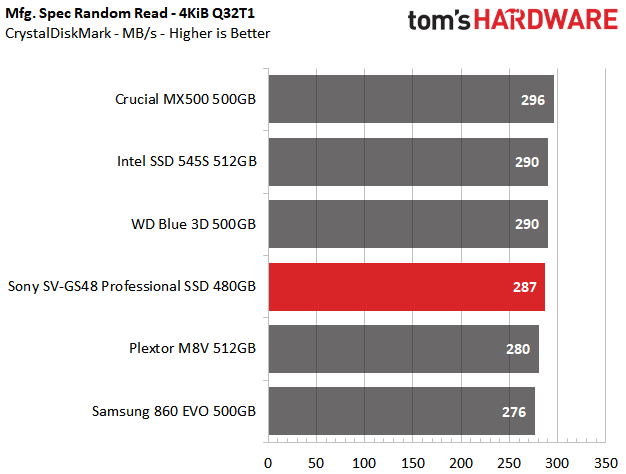
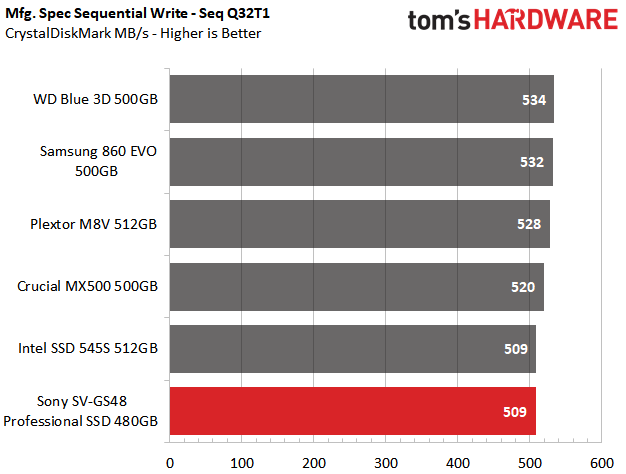
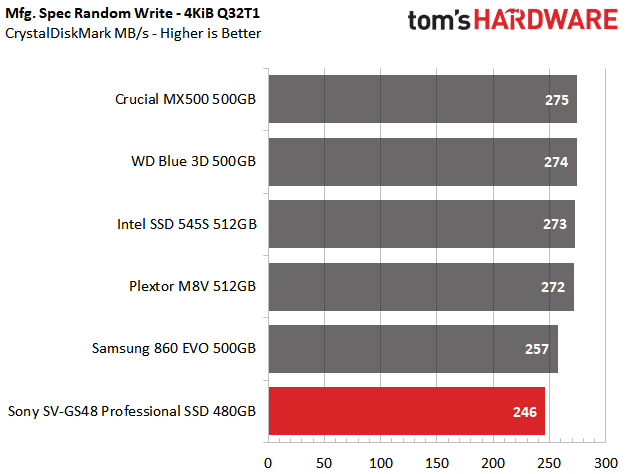

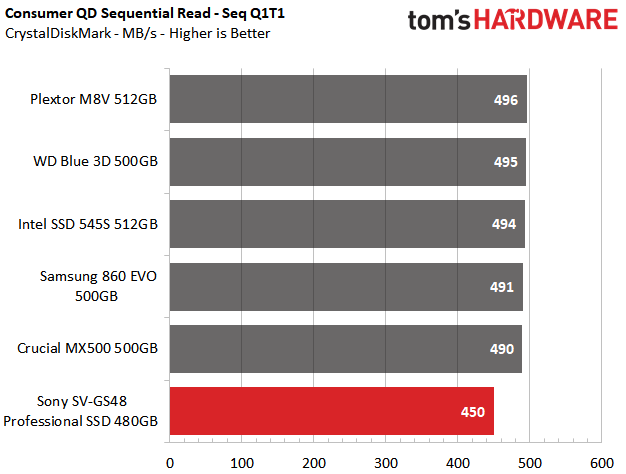

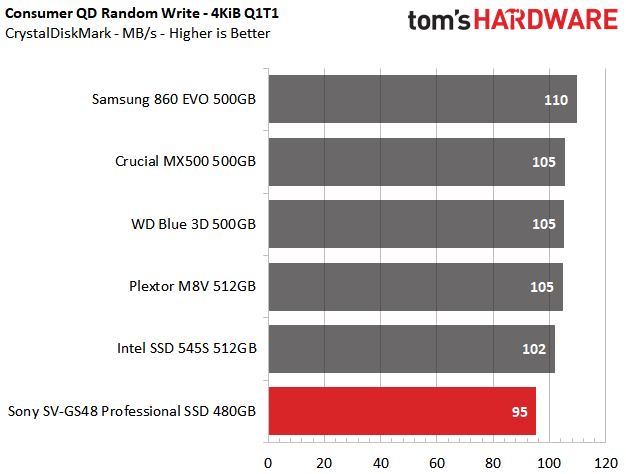
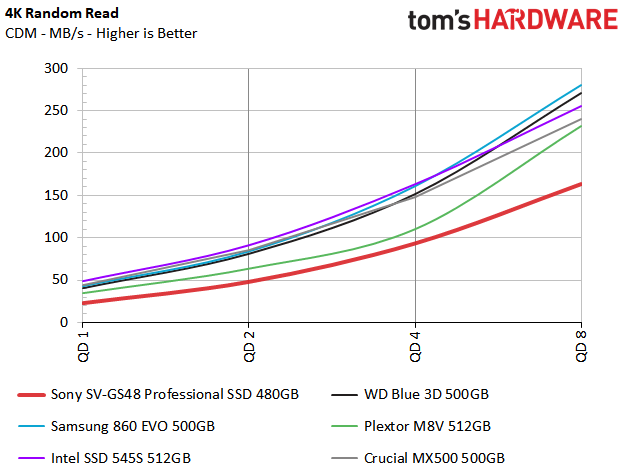
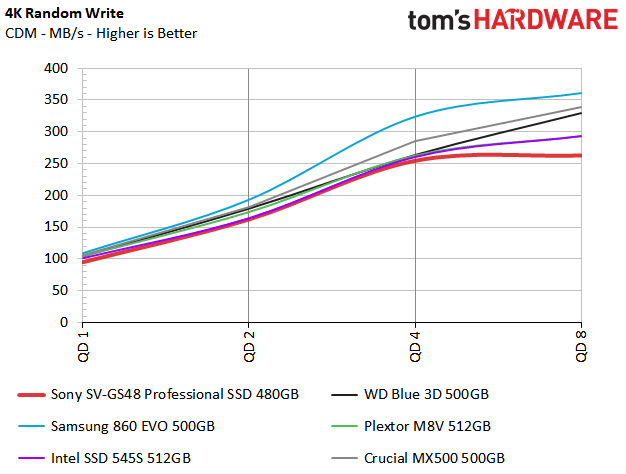
The G Series SSD delivers peak sequential read/write speeds of 552/509MB/s at a QD (queue depth) of 32. Those are the lowest results in the test pool, but still respectable. The other SSDs have a 40-45MB/s lead in read performance at QD1, which is more important because it represents much slower performance for the Sony SSD in real-world desktop workloads.
Random performance is the G Series' weakness. 4K random read speed is only 23MB/s at QD1. The random read and write results still remain the lowest in the group even after we intensify the workload.
Sustained Sequential Write Performance
Official write specifications are only part of the performance picture. Most SSD makers implement an SLC cache buffer, which is a fast area of SLC-programmed flash that absorbs incoming data. Sustained write speeds can suffer tremendously once the workload spills outside of the SLC cache and into the "native" TLC or QLC flash. We hammer the SSDs with sequential writes for 15 minutes to measure both the size of the SLC buffer and performance after the buffer is saturated.
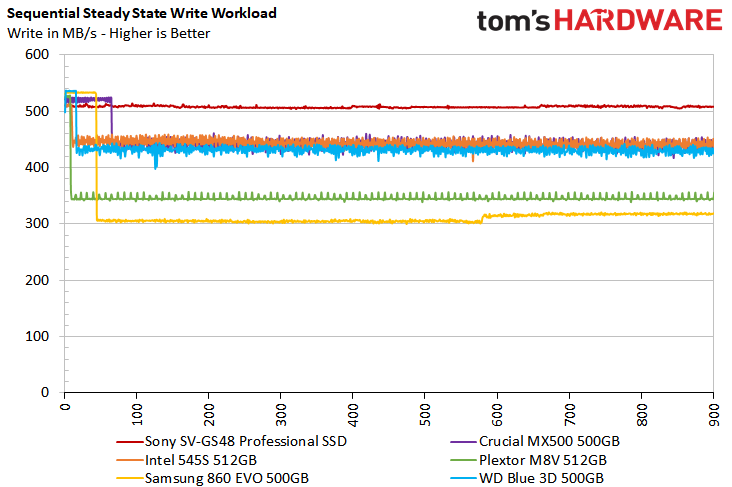

Most of the TLC-based SSDs jet out with faster write performance for the first few gigabytes of writes, however, performance degrades anywhere from 50-100MB/s after the buffer is filled.
This is what the Sony G Series was designed for. The SV-GS48 delivers consistent write results just over 500MB/s on average, all without a hiccup along the way.
Power Consumption
We use the Quarch HD Programmable Power Module to gain a deeper understanding of power characteristics. Idle power consumption is a very important aspect to consider, especially if you're looking for a new drive for your laptop. Some SSDs can consume watts of power at idle while better-suited ones sip just milliwatts. Average workload power consumption and max consumption are two other aspects of power consumption, but performance-per-watt is more important. A drive might consume more power during any given workload, but accomplishing a task faster allows the drive to drop into an idle state faster, which ultimately saves power.
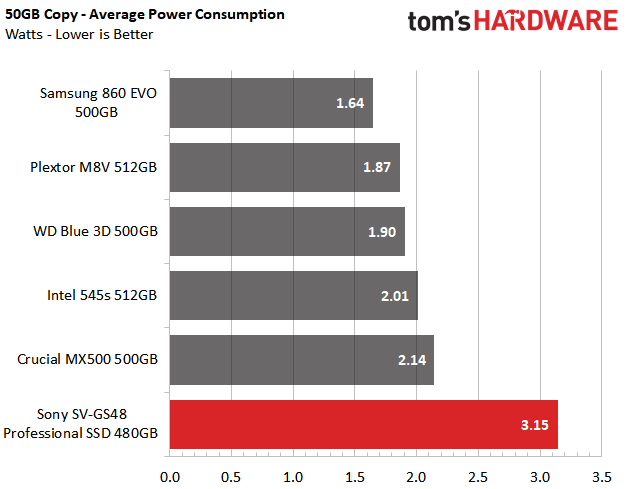
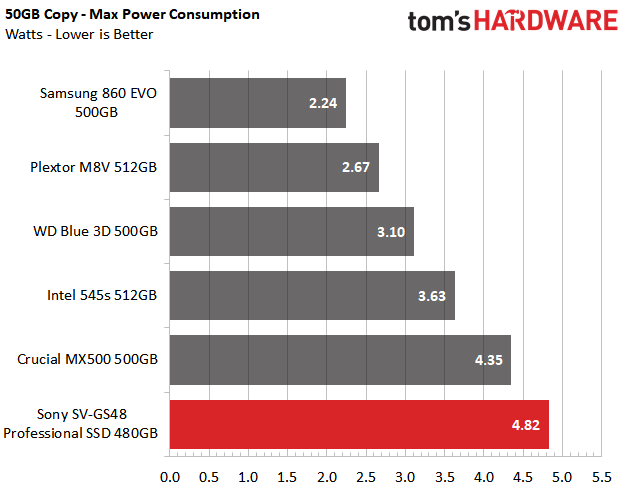


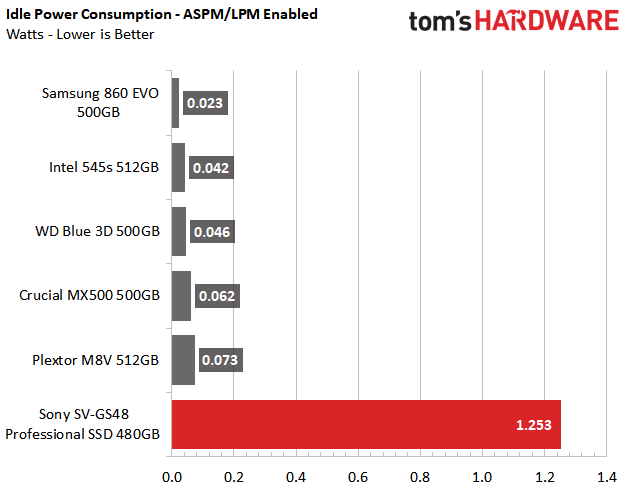
Sony’s G Series Professional SSDs are heavily optimized for recording video data at a fast pace, but it isn't optimized for power efficiency.
At idle the SV-GS48 consumed 1.25W, the worst result of the group, and it does not support LPM like the other drives.
It consumed a little over 3W of power during the 50GB file copy test, which is nearly 50% more than the next SSD. Peak consumption hit 4.82W, which is still the highest result in the group.
MORE: Best SSDs
MORE: How We Test HDDs And SSDs
MORE: All SSD Content
Current page: 480GB Performance Results
Prev Page Long Warranty, High Endurance, and a Price to Match Next Page Conclusion
Sean is a Contributing Editor at Tom’s Hardware US, covering storage hardware.
